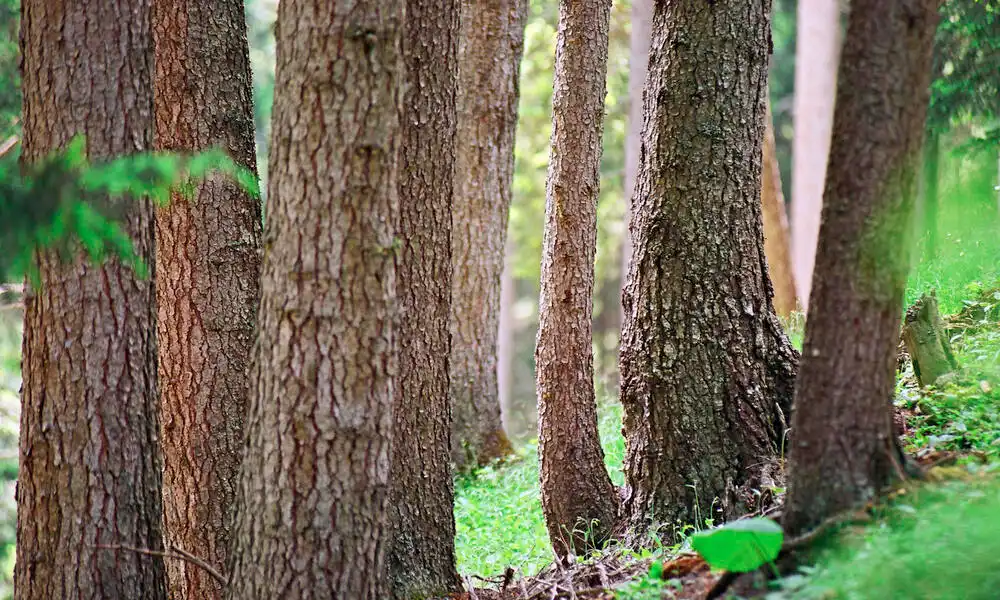If you want to buy sustainable packaging pouches, the simplest way is to choose those with eco-certifications. However, not all packaging pouches have such certifications. For uncertified pouches, you need to analyze the materials to determine whether they qualify as sustainable.
1. Buy Packaging with Eco-Certifications.
Packaging with the following certifications is a great option:
- FSC (Forest Stewardship Council): Ensures the paper materials used in packaging are sourced from sustainably managed forests, avoiding illegal logging and deforestation.
- OK Compost: Guarantees materials can decompose completely into carbon dioxide, water, and organic matter under industrial or home composting conditions.
- EN 13432: Meets EU standards by ensuring 90% of the packaging material decomposes into natural elements within 12 weeks in industrial composting facilities.
- USDA BioPreferred Program: Verifies the percentage of bio-based content in packaging materials, helping consumers identify products made from renewable resources.
- C2C (Cradle to Cradle): Assesses the environmental impact of packaging throughout its lifecycle, including material safety, recyclability, and carbon footprint.
- BPI (Biodegradable Products Institute): Certifies materials can fully degrade in commercial composting environments, conforming to ASTM D6400 or D6868 standards.
- TÜV Austria: Provides testing for biodegradability, compostability, and ecological safety.
- Blue Angel (Germany): Ensures packaging materials are environmentally friendly, recyclable, and low in toxicity.
- GreenPla (Japan Bioplastics Association): Certifies materials as biodegradable and meeting eco-friendly requirements.
- GRS (Global Recycled Standard): Verifies the percentage of recycled content in packaging and ensures the production process aligns with environmental and social responsibility standards.
2. Identifying Biodegradable Packaging pouches.
Most packaging pouches are made of one or more materials. If all materials used are biodegradable, the pouch is considered biodegradable.
Common Biodegradable Materials for Packaging pouches:
Material | Biodegradable | Application | Degradation Conditions & Time |
PLA | Yes | Food packaging, shopping pouches, produce pouches | Industrial composting, 6-12 months |
PBAT | Yes | Food packaging, trash pouches, multilayer films | Soil or compost, 6-12 months |
PHA | Yes | Premium food packaging, medical tools | Natural environment, 3-6 months |
PCL | Yes | Film packaging, specialty medical items | Composting, 6-9 months |
Paper | Yes | Dry goods packaging (fully paper-based) | Natural environment, 2-3 months |
Packaging made entirely of PLA, PBAT, PHA, PCL, or paper can fully degrade naturally, qualifying them as sustainable packaging pouches.
3. Identifying Recyclable Packaging pouches.
Examples of Commonly Recyclable Materials:
- PET (Polyethylene Terephthalate):Highly recyclable and one of the most widely recycled plastics globally.
- PE (Polyethylene):Highly recyclable.
- OPP (Biaxially Oriented Polypropylene):Recyclable but with lower recycling rates due to high costs.
- CPP (Cast Polypropylene):Recyclable, though recycling depends on local facilities.
Materials Usually Considered Non-Recyclable:
- PA (Nylon):Technically recyclable, but recycling rates are low in practice.
- PVDC (Polyvinylidene Chloride):Rarely recycled due to chlorine content; often treated as non-recyclable waste.
Pouches made from PA or PVDC are not sustainable, as they are neither recyclable nor biodegradable.
Important Note:
Even if a pouch is made from recyclable materials, it is not necessarily recyclable. For instance:
- If the pouchis made of a single recyclable material like PET, PE, OPP, CPP, it can typically be recycled.
- If the pouchcombines multiple materials (e.g., PET/PE/OPP/CPP), the recyclability depends on the difficult and costly it is to separate the materials. If the cost of separation exceeds the recycling value, the pouch is generally considered non-recyclable.
I previously wrote a related blog, you might be interested in reading it—Are Stand Up Pouches Recyclable?
4. Are pouches Made from Both Biodegradable and Non-Biodegradable Materials Sustainable?
Pouches containing materials such as PA or PVDC, which are neither recyclable nor biodegradable, are not sustainable.
What About Pouches Made from Both Biodegradable and Recyclable Materials?
- These are only sustainable if the materials can be easily separated for recycling or composting.
- If the separation process is too difficult or costly, such pouchesare deemed
5. Summary
To purchase sustainable packaging pouches, follow these guidelines:
- Opt for pouches with eco-certifications.
- Avoid pouches made with materials that are neither biodegradable nor recyclable, such as PA or PVDC.
- Choose pouches made from a single material that is either biodegradable or recyclable, as these are more sustainable.
- For multi-material pouches, assess the ease and cost of material separation relative to recycling value.

